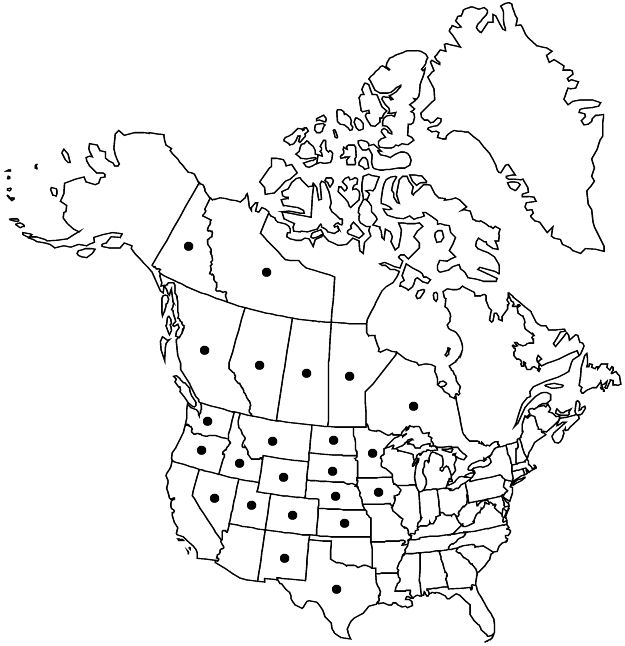Amelanchier alnifolia var. alnifolia
Shrubs, 1–8 m. Stems 1–20, often colonial. Leaves: petiole (5–)11.7–17.5(–28) mm; blade usually elliptic to oval to suborbiculate, sometimes quadrangular, (20–)33–47(–67) × (14–)24–36(–55) mm, base usually subcordate to truncate, sometimes ± tapering, apex usually rounded to truncate, sometimes acute or mucronate, abaxial surface glabrous or sparsely to moderately hairy, adaxial glabrous or sparsely hairy. Inflorescences (4–)6–11(–16)-flowered, (8–)26–43(–62) mm. Pedicels: proximalmost (5–)8–16(–29) mm. Flowers: sepals (1.7–)2.6–3.6(–4.9) mm; petals oblanceolate to oval, (5.7–)9–14(–18.8) × (2.2–)3.7–5.1(–6.6) mm; ovary apex moderately to densely hairy (or glabrous). Pomes 10–15 mm diam. 2n = 4x.
Phenology: Flowering May–Jul; fruiting Jul–Aug.
Habitat: Stream banks and shores, lake shores, mountainsides, dry rocky and grassy slopes (northern shrub-steppe), hillsides, woods, thickets, shaded canyons, moist roadsides
Elevation: 30–2900 m
Distribution

Alta., B.C., Man., N.W.T., Ont., Sask., Yukon, Colo., Idaho, Iowa, Kans., Minn., Mont., Nebr., Nev., N.Mex., N.Dak., Oreg., S.Dak., Tex., Utah, Wash., Wyo.
Discussion
Variety alnifolia extends much farther east than any other western shadbush; it is distinguished by its rounded to truncate leaves, hairy ovary apices, and relatively large fruits. The fruits are grown commercially and are an ingredient of the native American food pemmican.
Selected References
None.